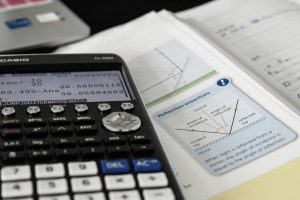The Role of Multisensory Learning in Special Education

Introduction
As a parent, you want to provide the best education for your child, especially if they have special learning needs. Special education plays a crucial role in ensuring that children with learning disabilities or special needs receive the support and tailored instruction they require to thrive academically and socially. In this article, we will explore the role of multisensory learning in special education and introduce you to a powerful tool called the abacus that can revolutionize your child’s mathematical abilities. So, let’s dive in and unlock the power of multisensory learning!
What is Special Education?
Before we delve into multisensory learning, let’s first understand what special education entails. Special education refers to a range of educational interventions designed to meet the unique learning needs of students with disabilities or special needs. It provides individualized instruction, accommodations, and support services to help these students succeed academically and develop essential life skills.
Special education courses address various learning disabilities such as dyslexia, ADHD (attention-deficit/hyperactivity disorder), autism spectrum disorders, intellectual disabilities, and speech or language impairments. The goal is to create an inclusive environment where every child can thrive and reach their full potential.
The Power of Multisensory Learning in Special Education
Multisensory learning is an approach that engages multiple senses simultaneously to enhance information processing and retention. By incorporating visual, auditory, tactile, and kinesthetic elements into lessons, multisensory learning capitalizes on the brain’s ability to make stronger connections and improve understanding. This methodology is particularly beneficial for students with diverse learning needs who may struggle with traditional, single-sensory instruction.
Let’s explore the key benefits of multisensory learning in special education:
Enhanced Engagement and Attention
Multisensory activities stimulate different areas of the brain, increasing attention and focus. This is particularly beneficial for students with ADHD or autism who may find it challenging to maintain sustained attention in a traditional classroom setting. By incorporating visual, auditory, tactile, and kinesthetic elements into lessons, teachers can create an engaging learning environment that captures students’ interest and keeps them actively involved.
Improved Retention and Understanding
By presenting information through multiple sensory channels, multisensory learning creates stronger neural connections, making it easier for students to process, understand, and remember new concepts. For example, when children manipulate physical objects like blocks or beads while learning math, they engage their senses of touch and sight, reinforcing their understanding of abstract concepts. This hands-on approach enhances retention and deepens comprehension.
Active and Experiential Learning
Multisensory learning encourages students to interact with materials, participate in hands-on activities, and engage in experiential learning. This approach boosts motivation and self-confidence, especially for students who have struggled with traditional teaching methods. Through active participation, students develop a deeper understanding of concepts and can apply their knowledge in real-world situations.
Addresses Diverse Learning Needs
One of the significant advantages of multisensory learning is its ability to address diverse learning needs. Every student learns differently, and multisensory instruction allows teachers to tailor their approach to individual preferences. Whether a student is a visual learner, an auditory learner, or benefits from hands-on experiences, multisensory techniques can be adapted to accommodate different learning styles. This inclusive approach ensures that all students receive the support they need to succeed.
Supports Cognitive and Social Development
Multisensory learning promotes neuroplasticity, the brain’s ability to form new neural pathways. By engaging multiple senses, students strengthen these connections, enhancing cognitive function and overall brain development. Furthermore, multisensory activities can support language and literacy development and foster social skills through collaborative, interactive tasks. Students learn to work together, communicate effectively, and build relationships while engaging with the material.
Builds Life Skills
Incorporating multisensory strategies into special education instruction helps students develop essential life skills. Activities that involve planning, organization, and teamwork not only reinforce academic concepts but also cultivate executive functioning skills and social skills necessary for success beyond the classroom. These skills empower students to become independent learners and navigate various personal and professional scenarios effectively.
The Abacus Tool: Harnessing the Power of Multisensory Learning
One of the most effective tools for multisensory learning in mathematics is the abacus. The abacus has been used for centuries as a mathematical tool, but its benefits go beyond calculations. Let’s explore how the abacus tool harnesses the power of multisensory learning in special education:
Visual Representation: The abacus provides a visual representation of numbers, allowing students to see the manipulation of quantities as they perform calculations. This visual feedback enhances understanding and reinforces number sense.
Tactile Engagement: As students slide beads back and forth on the abacus rods, they engage their tactile senses. This hands-on experience strengthens their understanding of number concepts and helps them develop fine motor skills.
Auditory Reinforcement: Each movement of beads on the abacus produces a distinct sound, creating an auditory reinforcement that helps connect numbers with quantities. This auditory feedback aids in memory recall and reinforces mathematical concepts.
Kinesthetic Learning: The physical interaction with the abacus promotes kinesthetic learning, which involves whole-body movements and engages muscles to reinforce learning and retention. This hands-on approach appeals to students who learn best through movement.
Multisensory Integration: By combining visual, tactile, auditory, and kinesthetic elements, the abacus optimizes multisensory learning. Students engage multiple senses simultaneously, resulting in a more comprehensive understanding of mathematical concepts.
Multisensory Learning in Special Education
|
Key Benefit |
How It Helps |
Example Strategies |
|---|---|---|
|
Enhanced Engagement |
Stimulates multiple senses to maintain attention and interest. |
Music, movement, or tactile activities (e.g., tracing letters in sand). |
|
Improved Retention |
Strengthens neural connections by using sight, sound, touch, and movement. |
Visual aids (charts) paired with verbal explanations and hands-on manipulatives. |
|
Active Learning |
Encourages hands-on participation, boosting confidence and motivation. |
Science experiments, art projects, or role-playing scenarios. |
|
Addresses Learning Needs |
Tailors instruction to individual preferences (visual, auditory, kinesthetic). |
Using textured materials for math, audiobooks for reading, or dance for storytelling. |
|
Cognitive Development |
Promotes neuroplasticity and problem-solving skills. |
Puzzles, building blocks, and interactive games. |
|
Social & Life Skills |
Fosters teamwork, communication, and executive functioning. |
Group projects, collaborative art, or timed organizational tasks. |
|
Accessible Instruction |
Makes abstract concepts tangible for students with learning disabilities. |
Color-coding math problems, 3D models for science, or rhythm-based spelling drills. |
Conclusion
Multisensory learning plays a critical role in special education by making instruction engaging, inclusive, and effective for students with diverse learning needs. By incorporating visual, auditory, tactile, and kinesthetic elements into lessons, teachers can enhance engagement, improve retention, and address individual learning preferences. The abacus tool exemplifies the power of multisensory learning in mathematics education. Its visual representation, tactile engagement, auditory reinforcement, and kinesthetic learning opportunities make it a valuable resource for students with special needs.
If you’re seeking an effective way to enhance your child’s mathematical skills and cognitive development, consider enrolling them in an abacus program. SIP Abacus India offers world-class skill development programs that use the abacus tool and visualization techniques to teach mental math skills to children aged 6-12. Their structured levels and small class sizes ensure individual attention and an engaging learning experience. Studies have shown that children who complete the SIP Abacus program perform significantly better in math and reading at school. Give your child a competitive edge and unlock their potential with the power of multisensory learning through SIP Abacus!
Remember, every child is unique, and finding the right educational approach is essential for their success. Embrace the power of multisensory learning and watch your child thrive in their academic journey!



